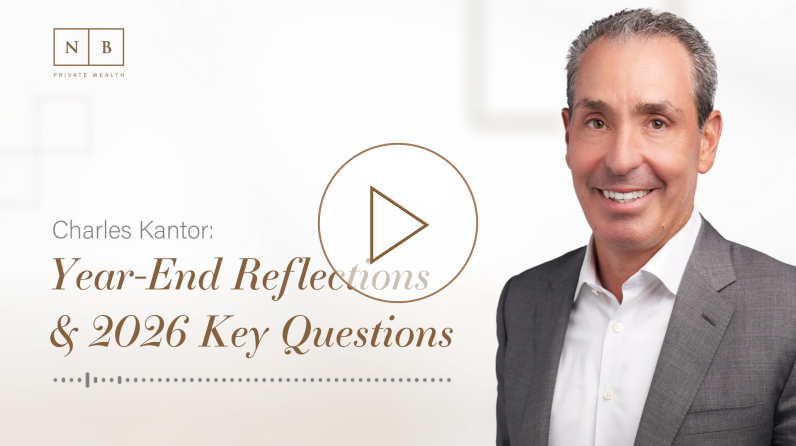

These 10 guideposts can help to map your succession planning journey.
Few issues generate more concern and anxiety for wealth creators and their families than succession of decision-making and control. Even when holdings are institutional in scale, family dynamics may dominate, including sibling rivalry, parent-child tensions and recurring behavioral patterns. Thus, planning for a governance process across generations can be critical to favorable outcomes. Below is a roadmap to help guide your succession planning journey.
1) Define the Scope of Your Family Enterprise
As individual planets constitute a galaxy, often many entities make up a family enterprise. They may include an operating business or investment fund, philanthropic vehicles such as a donor-advised fund or private foundation, and investment and operating entities, all potentially coordinated by a family office. Succession plans are often needed for all of them. The good news is that multiple entities can accommodate more roles for family members who want to be involved.
2) Define Long-Term Success
Before launching detailed plans for family governance, you may benefit from envisioning your long-term hopes for family and business. This process involves both introspection and discussion with your spouse and others. Remember that a family’s wealth across time includes not only its financial assets, but its “human capital”—the health and wellness of your family as they seek to lead fulfilling lives in harmony with their talents and interests.
3) Focus on the Job Description, Not the Individual
In succession planning, the decision to designate certain children to assume control of your enterprise can raise concerns about exacerbating family conflicts. Some founders may conclude that selling to outsiders is the only way to avoid family and business strife. Before making any decisions, it’s worthwhile to think first about the qualities and skills needed to maintain business cohesion and grow the family’s wealth. Children may be prepared for wealth stewardship in the future, with certain family members also suited (with training and experience) to actually operate a family business or entity.
4) Set a Framework for Decision-Making
Because wealth preparation at some point entails wealth disclosure, founders often delay laying the groundwork for success. Wealth communication, however, may proceed without having to disclose any dollar amounts; you may instead focus first on communicating what you would like family wealth to support (or not support). You can also have a positive impact on your family's future by clarifying spending, investment and other operational policies, and integrating professional and institutional perspectives into decision-making processes.
5) Reinforce Your Spouse’s Understanding
In the push toward succession planning, it’s easy to forget that your spouse can play an important role, both in ensuring continuity and cultivating future stewardship. It’s critical to review with your spouse contingency plans and estate planning documents to protect the family and business in the event of disruption and avoid vulnerability to outside influence. Even with a prenuptial agreement in place, reviewing the flow of steps to take in the event of death or incapacity could help your spouse work productively with advisors.
6) Have ‘the Conversation’
You may find that your heirs are ready and able to take the reins of the family business, or alternatively, you may think they lack the drive, interest or capability to run it. For their part, your children may assume that leadership roles have been earmarked for someone else or that they need more training to assume leadership. To gain clarity on the issue of succession, it’s important to engage in candid conversation—both to share your vision and understand their interests and priorities—ideally on a periodic basis. This can help you plan effectively for their roles and the overall trajectory for the enterprise.
7) Integrate Succession Into Legal Documents
For both immediate contingency planning and long-term succession, it’s vital to coordinate with your estate planning attorney periodically to ensure that your documents align with your intent. These generally include wills, trust instruments, shareholder (including buy-sell) agreements and employment agreements, as well as insurance policies, life insurance trusts, beneficiary designations, deferred compensation plans, health care proxies, living wills, powers of attorney and health information disclosure forms.
8) Establish a Development Runway
Your willingness to invest time and resources in cultivating the talents of your children may help motivate them to take on leadership roles. Consider offering them internships to gain more business exposure; to build their credibility within the business, avoid guaranteeing them eventual leadership roles; encourage them to work elsewhere to gain experience; require that they train in communication, negotiation and other relationship-based skills; match them with outside mentors; and give them room to both succeed and make mistakes. The company board and management can help in cultivating and assessing family members for potential leadership.
9) Hold Regular Family Meetings
Effective succession planning typically entails regular communication to all family shareholders, whether active in the business or not. Many closely held corporations operate for years without a formal annual meeting, leaving non-insiders in the dark. But such meetings provide a valuable opportunity for the family to learn, raise relevant questions and voice concerns. For family wealth based on financial assets, hosting regular investment updates can cultivate the financial literacy needed to evaluate strategies and managers. Families may also benefit from scenario planning that considers hypothetical events that could disrupt the business, and elicits feedback from across the group to help plan for enterprise risk.
10) Signal the Transition
Even with a chosen successor, no transition will occur if you are still regarded as “calling the shots.” In successful shifts in leadership, the founder typically communicates the timeline of transition in unmistakable terms, while assuring that they will be available to counsel the successor as needed. Bifurcating authority between distinctive roles (e.g., board chair and CEO) may help define boundaries between family members. When the successor has acquired the training and experience needed to run the business, you can begin deferring to them on key decisions.
Preparing for Your Next Adventure
Your path after stepping back from company leadership depends on your interests, whether based on travel, philanthropy or building new enterprises. Rather than disengage entirely, you may find roles on the company board or as an “ambassador” to clients, for example, that capitalize on your experience but avoid tripping over new management. Regardless of your intentions, preparation is crucial—both in communicating with family and creating planning structures—to realize an effective transition and strengthen the family enterprise for the future.
HYPOTHETICAL CASE STUDY
Succession Planning in Action
Abe Goldman has created significant wealth over a long career in real estate development. In approaching his 70th birthday, he has yet to hand off decision-making authority for his business and family enterprises. However, a health issue has caused him to think more proactively about succession and cultivating the next generation for leadership. How should he proceed?
Preparation
As discussed in our “Succession Planning Roadmap,” a key first step in planning is to define the scope of your family enterprise, which can extend far beyond the core business. Abe not only controls the real estate company, but also a family office responsible for investments generated from previous liquidity events. He has also established a substantial donor-advised fund to channel his charitable giving.
Also important is defining what long-term success will mean for that enterprise. Abe hopes that some family members will take part in the business, but also come to understand the value of public service and the responsibilities of wealth. For others, he would like to see both public commitment and a level of financial literacy to be effective stewards of family wealth. Overall, he does not want money to be a source of conflict for the family.
Leadership
With the hope that a family member will take the reins of the company, Abe seeks to define the qualities and skills needed to be successful. His daughter, Joanne, has worked in a variety of paid and unpaid capacities at the firm, and now serves on the real estate acquisitions team. However, he feels that she could benefit from broader experience elsewhere, with the understanding that she can return to take on more responsibility at a later date. Abe’s son, David, has expressed little desire to run the business, but with Abe’s encouragement has taken courses in finance and investing so that, as an owner, he can engage effectively with management. Another son, Matthew, has taken a particular interest in environmental issues, and Abe asks that he take a deeper role in the company’s sustainability practices. Over time, Abe will consider whether to have one or more of his children serve as fiduciaries alongside a corporate trustee for various family trusts.
Engagement and Decision-Making
Abe had conducted extensive conversations with the children about the purpose of family resources, starting with broader concepts, but eventually filling in the blanks with more details. He has also encouraged open dialogue to better understand their interests and clarify his standards as to involvement in the family enterprise. With a transition now in sight, he is working to refine how business and philanthropic decisions should be made once he retires. With help from senior management, he strengthens employment and other operational policies, and seeks to broaden professional input on matters such as capital expenditures, leverage, business strategy and compensation. He includes family members not active in the company in periodic briefings to deepen their understanding of the business.
On a personal level, Abe consults with his estate planning attorney about succession, and they make sure that his intentions are captured in collateral and key documents across the family enterprise. He initiates more frequent discussions with his wife so she can take a meaningful and informed role in the event of his death or incapacity.
Transition and Beyond
Once his chosen successor is in place, Abe steps back from day-to-day decisions, but remains on the board of directors and serves as a company “ambassador” to key clients. He expands his role in the family’s philanthropic efforts, focusing on education. He also finds more time to travel, attend classical music concerts, spend time with his grandchildren and build his collection of art, all of which he sees as rewards for his longtime devotion to building his business and family legacy.
The above is a hypothetical case study based on issues experienced by our clients. See disclosures at the end of this publication, which are an important part of this article.


VIDEO
The Kantor Group | Charles Kantor’s Year-End Reflections and Key Questions as We Head Into 2026

INSIGHTS
CIO Notebook: Dual Release of Delayed Non-Farm Payrolls Likely Supports Another Cut

INSIGHTS
Using Tax-Free Gifts for Wealth Transfer

INSIGHTS
CIO Notebook: Powell Plays the Middle as Fed Cuts Rates

MARKET COMMENTARY
Giving Thanks for Market Strength

INSIGHTS
CIO Notebook: September U.S. Non-Farm Payrolls Further Complicate the Narrative

VIDEO
Holly Newman Kroft Featured on CNBC’s Money Movers November 18
VIDEO
Plan for Peace of Mind with Our Estate Planning Organizer
MARKET COMMENTARY
Some Tricks, More Treats
INSIGHTS
CIO Notebook: Markets Rattled as Fed Leans Hawkish
REPLAY
Private Wealth Investment Outlook 4Q25
INSIGHTS
CIO Notebook: September Core CPI Comes in Late but Light
INSIGHTS
Charitable Fundraising: Moving Beyond Cash
This material is provided for informational and educational purposes only and nothing herein constitutes investment, legal, accounting or tax advice, or a recommendation to buy, sell or hold a security. This material is general in nature and is not directed to any category of investors and should not be regarded as individualized, a recommendation, investment advice or a suggestion to engage in or refrain from any investment-related course of action. Investment decisions and the appropriateness of this material should be made based on an investor’s individual objectives and circumstances and in consultation with his or her advisors. Neuberger Berman, as well as its employees, does not provide tax or legal advice. You should consult your accountant, tax adviser and/or attorney for advice concerning your particular circumstances. Information is obtained from sources deemed reliable, but there is no representation or warranty as to its accuracy, completeness or reliability. All information is current as of the date of this material and is subject to change without notice. Any views or opinions expressed may not reflect those of the firm as a whole. Past performance is no guarantee of future results.
Philanthropic & Family Governance Advisory Services and related materials are provided as a courtesy and are for informational and discussion purposes only. Neuberger Berman is not acting in a fiduciary capacity or recommending any specific governance structures or philanthropic or charitable activities. Recipients of Philanthropic & Family Governance Advisory Services should consult their own tax or legal advisors before implementing any governance structure or philanthropic or charitable activities.
Tax planning and trust and estate administration services are offered by Neuberger Berman Trust Company. “Neuberger Berman Trust Company” is a trade name used by Neuberger Berman Trust Company N.A. and Neuberger Berman Trust Company of Delaware N.A., which are affiliates of Neuberger Berman Group LLC.
Hypothetical growth examples are for informational and educational purposes only.
Neuberger Berman Investment Advisers LLC is a registered investment adviser. The “Neuberger Berman” name and logo are registered service marks of Neuberger Berman Group LLC.